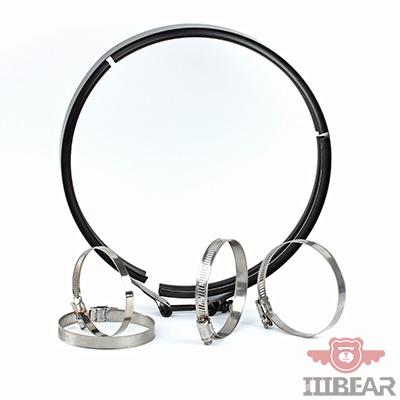Gas lines are critical components in various industrial, commercial, and residential applications, ensuring the safe transport of natural gas or propane. Clip fasteners, also known as gas line clips or clamps, are commonly used to secure gas lines in place, preventing movement and potential leaks. However, there are instances where these fasteners need to be removed, such as during repairs, replacements, or upgrades. This guide will walk you through the process of removing clip fasteners on gas lines safely and efficiently.

Understanding Gas Line Clip Fasteners
Gas line clip fasteners are typically made from durable materials like stainless steel or plastic, designed to withstand high pressure and temperature variations. They come in various types, including spring clips, push-to-connect clips, and screw-type clamps. Each type serves a specific purpose and requires a unique approach for removal.
Before attempting to remove any clip fastener, it’s essential to identify the type of clip used on your gas line. This will determine the tools and techniques required. For example, spring clips may require pliers, while screw-type clamps might need a screwdriver or wrench.
Tools and Equipment Needed
To remove clip fasteners on gas lines, you’ll need the following tools:
-
Pliers (for spring clips)
-
Screwdriver (flathead or Phillips, depending on the clip type)
-
Wrench (for screw-type clamps)
-
Safety gloves and goggles (to protect against sharp edges or debris)
-
Gas leak detector (to ensure no leaks occur during the process)
Having the right tools on hand ensures a smooth and safe removal process.
Step-by-Step Guide to Removing Clip Fasteners
-
Turn Off the Gas Supply
Before working on any gas line, always shut off the gas supply. Locate the gas shut-off valve and turn it to the "off" position. This step is crucial to prevent gas leaks and ensure safety. -
Inspect the Clip Fastener
Examine the clip fastener to determine its type and mechanism. Check for any signs of corrosion, damage, or wear that might complicate the removal process. -
Use the Appropriate Tool
-
For spring clips, use pliers to compress the clip’s arms and gently pull it away from the gas line.
-
For push-to-connect clips, press the release tabs (if available) and slide the clip off.
-
For screw-type clamps, use a screwdriver or wrench to loosen the screw and open the clamp.
-
-
Remove the Clip Fastener
Once the clip is loosened, carefully remove it from the gas line. Avoid using excessive force, as this could damage the gas line or surrounding components. -
Inspect the Gas Line
After removing the clip, inspect the gas line for any signs of wear, cracks, or leaks. Use a gas leak detector to ensure the line is intact and safe.
Safety Precautions
-
Always work in a well-ventilated area to avoid gas buildup.
-
Wear safety gloves and goggles to protect against sharp edges or debris.
-
Never attempt to remove clip fasteners on a pressurized gas line.
-
If you’re unsure about any step, consult a professional technician.
When to Replace Clip Fasteners
Clip fasteners may need replacement if they show signs of corrosion, damage, or wear. Using worn-out clips can compromise the integrity of the gas line, leading to potential leaks or failures. Always replace old or damaged clips with high-quality, compatible fasteners to ensure long-term reliability.
Conclusion
Removing clip fasteners on gas lines is a straightforward process when done correctly. By following the steps outlined in this guide, you can safely and efficiently remove clip fasteners for maintenance, repairs, or upgrades. Remember to use the appropriate tools, follow safety precautions, and inspect the gas line thoroughly after removal.

